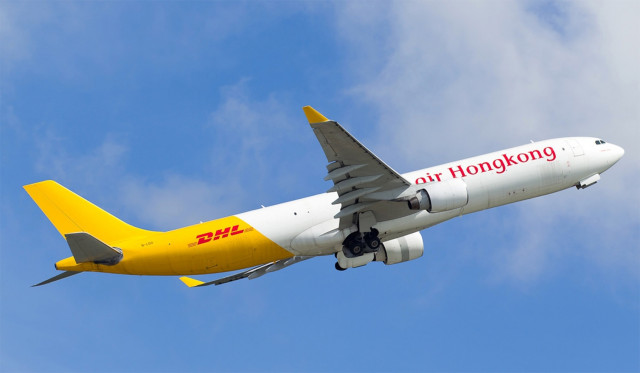Air Hong Kong has welcomed its fifth Airbus A330 freighter, B-LDT, to the fleet, adding more capacity for priority e-commerce on key customer DHL Express? intra-Asia network, and for Cathay Pacific Cargo during its downtime at Hong Kong International Airport.
Air Hong Kong was the world?s first airline to operate the A330-300P2F, and so was ahead of the curve for the rapidly growing market in freighter conversions. This has been driven in part by the burgeoning demand for e-commerce, which is accelerating demand in the narrow-body freighter market. The COVID-19 pandemic has also played a part, with the decrease in overall capacity and the early retirement of aircraft as airlines retrench, increasing the available feedstock of passenger aircraft.
The need for express or overnight fulfilment by short-haul aircraft for e-commerce is such that one US company has converted the recently retired ?Mad Dog? MD-80 series commuter airliner into an extremely cost-effective alternative to purpose-built aircraft. The MD-80s were, for more than 30 years, the mainstay of US domestic routes, but now some will leave their desert retirement homes and take to the skies once more, offering 12 pallet spaces in their main decks.
The wide-body market is less dynamic, but with the Boeing 747-8F production line closing, and demand for capacity rising, there is growing interest in wide-body conversions that offer a more affordable opportunity over new production line aircraft such as the Boeing 777F.
B-LDT, Air Hong Kong?s latest addition, is a passenger-to-freighter conversion and the fifth A330 to join the fleet. The A330s are split between two models ? two production A330-200F freighters, and now three slightly longer A330-300P2F passenger-to-freighter conversions. They joined the nine older wide-body Airbus A300-600s.
Clarence Tai, Air Hong Kong Chief Operating Officer, said: ?The A330 offers a larger capacity than the A300 and is more fuel-efficient. We started building our A330 fleet in 2018. Now, we have five A330s, so our fleet capacity based on the same number of aircraft has increased by up to 10 per cent compared to pre-2018.?




